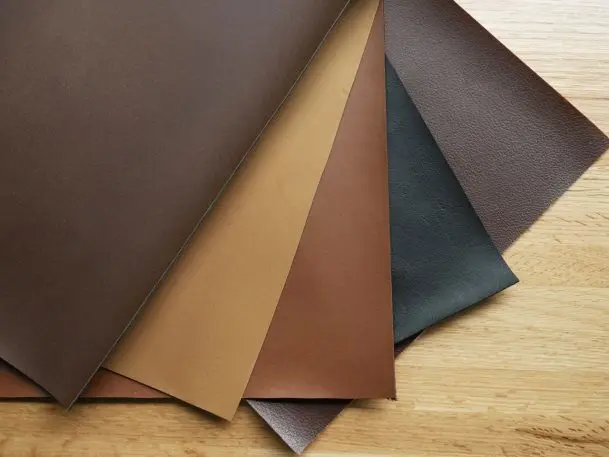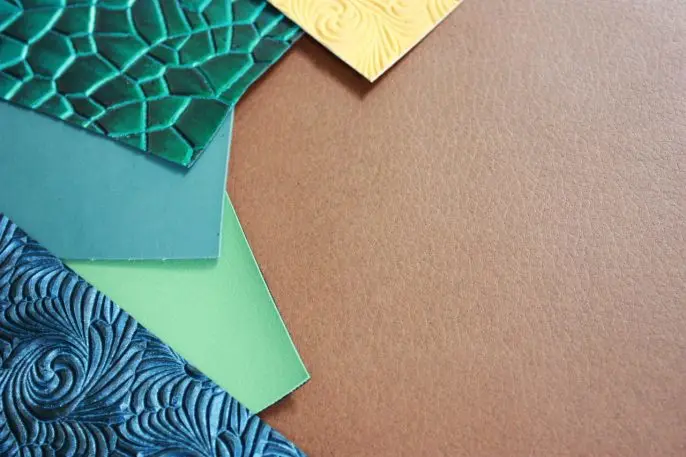Vegan leather shoes are typically made from plastics like polyurethane–so even though they might avoid the carbon footprint and animal welfare issues of raising cattle, they aren’t exactly environmentally friendly. Even plant-based leather typically uses plastic resin or glue to hold the material together. And while some companies work on lab-grown collagen or leather made from mushroom roots, those aren’t widely available and can be difficult to scale up. A new leather brand thinks it has technology that could make plant-based leather–without any plastic–mainstream.
“The foundation of the company is plants, not plastic,” says Luke Haverhals, the founder and CEO of Natural Fiber Welding, the company making a new brand of leather called Mirum. The product has a similar cost to plastic alternatives, but can be made from agricultural waste and is fully biodegradable.

Haverhals, who has a doctorate in analytical chemistry, started developing natural materials at the U.S. Naval Academy more than a decade ago. “Nature makes highly complex materials and makes those materials in abundance,” he says. “And if people knew how to manufacture those materials that already exist at big scales, then it would profoundly change how people manufacture.”
The company is in the process of patenting the methods that it uses to make its leather, and can’t yet share the details of the technology. But the key innovation involves melding natural fibers together without synthetic glues. “We figured out ways to basically get 100% natural composites that are bonded together using clever, controlled chemistry,” Haverhals says. Materials like cork powder, a by-product of making corks for wine, can be blended with coconut fiber to create a strong leather with a light texture, for example.
“Their unique approach utilizes their welding platform to mold and strengthen these waste inputs into a biodegradable, leather-like material,” says Katrin Ley, managing director of Fashion for Good, an Amsterdam-based innovation platform that hosts an accelerator and provides other tools for sustainable fashion companies. “This offers the potential to produce plastic-free leather substitutes at scale.”

That scalability is an advantage compared to other alternatives, Haverhals says. Making leather from mushrooms “still takes days, as opposed to minutes and seconds, like the processes we do,” and is limited to specific growing conditions. In a recent lawsuit, Bolt, a company making a mushroom-based leather, sued Ecovative, its supplier, arguing that it wasn’t meeting production deadlines. (Ecovative did not reply to a request for comment before this article was filed.) Processes that make “lab-grown” leather, like lab-grown meat, are also hard to scale up and require expensive R&D. “You don’t have to spend a billion dollars in biotech learning in order to use highly complex, highly useful fiber that is out in the world already,” he says.
The company plans to go head-to-head with plastic-based leather materials. At its factory in Illinois, it’s currently making custom samples for some potential customers, from the automotive industry to fashion brands. As it builds out the infrastructure in the factory, it will soon be able to produce millions of square feet of material. The cost is competitive. “The reason why we’re getting such traction from very large partners is that when we’re now talking about volumes and pricing, we can talk about volumes and pricing that compete with the plastic products in the market today,” Haverhals says. Some limited-edition products will begin to come to market in 2019; as we talk, Haverhals says that he’s wearing a belt made with Mirum leather and has a Mirum leather wallet in his pocket. A larger rollout will happen in 2020.
When those products eventually wear out, they can safely go in a compost bin, unlike plant-based leathers that include some plastic. “There are lots of people who say we need to go to a circular system,” Haverhals says. “And I think to myself, well, life is the original circular material. What humanity has needed, in my opinion, is a way to manufacture with all those abundant materials in ways that let people have more things with less cost of resources. Then those things are themselves just naturally circular so that the system can regenerate.”
Recognize your brand’s excellence by applying to this year’s Brands That Matter Awards before the early-rate deadline, May 3.
